In order to create beautiful images of birds on a consistent basis, it is important to understand the many elements that combine to make a good photo. This includes exposure, composition, light, sharpness, perch, pose, and background. However, these components are not absolute rules that must be followed in every image. As a matter of fact, some of the best images are those that break the rules or are “outside of the box.” Nevertheless, understanding these elements will inevitably lead to better bird images.
Exposure
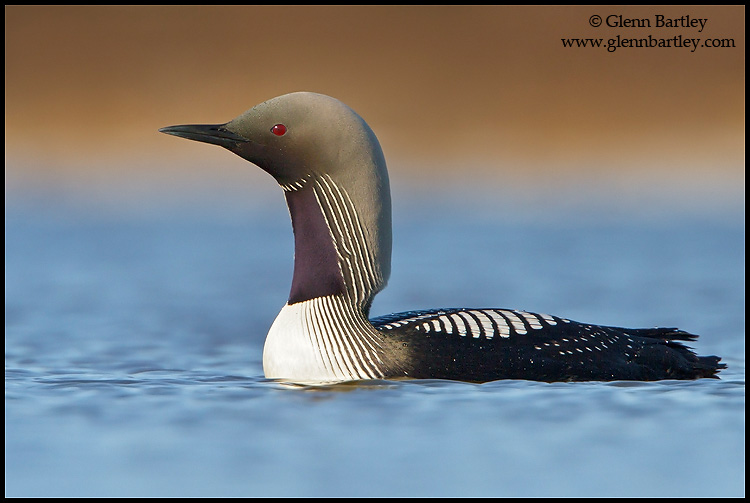 Pacific Loon (Gavia pacifica) swimming on a pond in Churchill, Manitoba, Canada.
Pacific Loon (Gavia pacifica) swimming on a pond in Churchill, Manitoba, Canada.
Successful bird images must be properly exposed so that they do not look too light or too dark. Creating a correct exposure essentially boils down to controlling the amount of light that reaches the film or digital sensor. Cameras control this through the inter-workings of three factors: the duration that the shutter is open (shutter speed), the size of the opening in the lens (aperture) and the sensitivity of the film (ISO speed). The best way to ensure proper exposure is to learn to read your cameras histogram and make adjustments through exposure compensation (adding or subtracting light from the way the camera meters a scene).
Composition
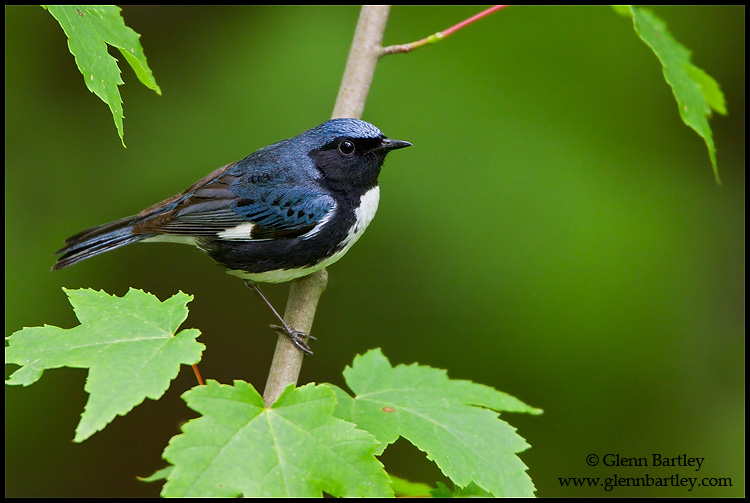 Black Throated Blue Warbler
Black Throated Blue Warbler
In addition to being exposed properly, an image must also be well composed. This generally refers to the balance of how the elements within the frame are arranged (bird, perch and background elements). Infinite possibilities exist. However, starting out with standard compositional guidelines such as the rule of thirds and ensuring that there is more room in front of the bird than behind it are good starting points.
Light
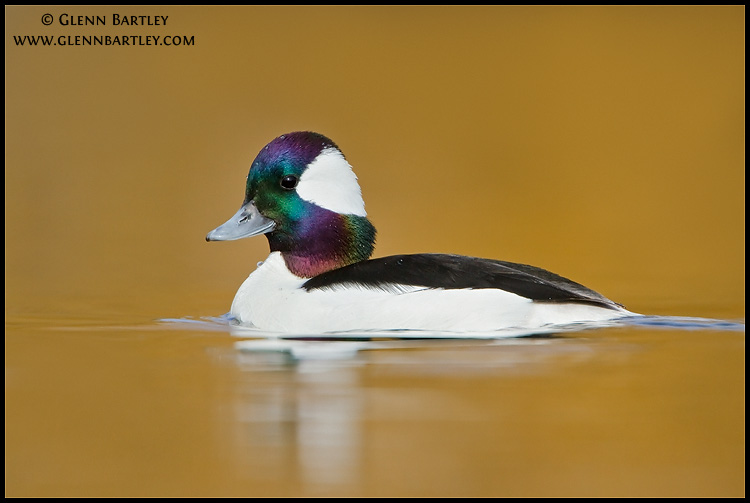 Bufflehead (Bucephala albeola) swimming on a pond near Victoria, BC, Canada.
Bufflehead (Bucephala albeola) swimming on a pond near Victoria, BC, Canada.
Photography is all about light. Understanding that light has quality, direction, intensity and how to harness these factors is an absolute must for any bird photographer. Great bird photographs can be taken in direct sunlight, shade, under cloudy skies and with the use of flash. Learning about light and how to work with, instead of against it, is a crucial element of bird photography.
Sharpness
 Common Loon (Gavia immer) swimming on a pond in the Okanagan Valley, BC, Canada.
Common Loon (Gavia immer) swimming on a pond in the Okanagan Valley, BC, Canada.
Most bird photographers are pretty obsessed with how sharp their images are. This is because bird images that are sharp (especially around the birds eye) are much more intimate, professional, and natural looking. Although there are situations in which a photo can be beautiful and artistic looking without being in focus, most successful images require the subject to be sharp. The sharpness of an image is dependent upon the photographer using good equipment, proper technique and support, an adequate shutter speed to freeze any movement and, most of all, accurate focus on the subject itself.
The Perch
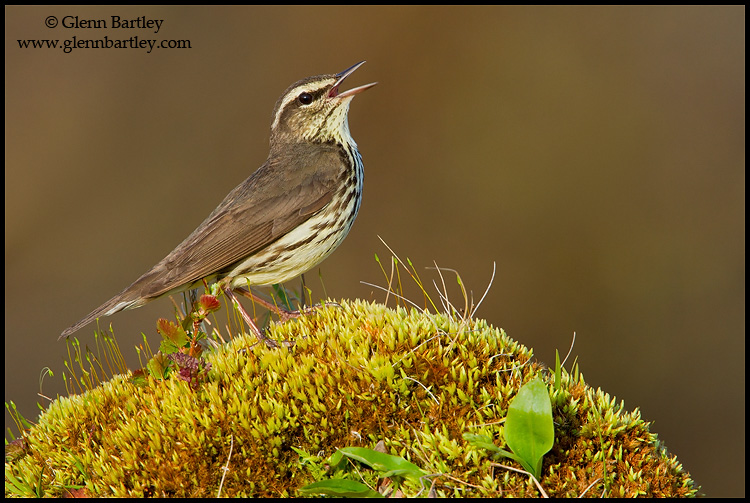 Northern Waterthrush (Seiurus noveboracensis) perched on the ground in Churchill, Manitoba, Canada.
Northern Waterthrush (Seiurus noveboracensis) perched on the ground in Churchill, Manitoba, Canada.
Imagine an image of your favorite species of bird that is properly exposed, well lit, and sharp as a tack. Now imagine that this image shows the bird perched on a chain link fence or a hydro wire. Chances are that no matter how good an image is it will not be successful unless the bird is perched on a natural looking and appropriately sized perch. The perch should be considered as an important part of the image—perhaps even as important as the subject itself. It should give clues in to the type of habitat where the bird lives and add interest to the overall image.
The Background
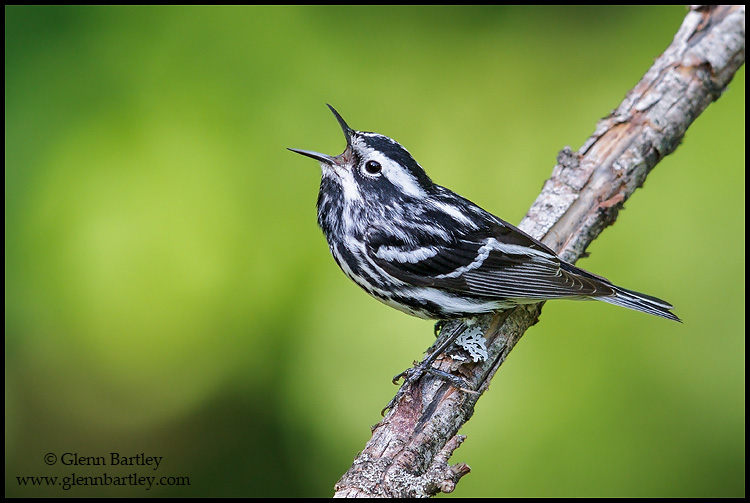 Black and White Warbler (Mniotilta varia) perched on a branch in southern Ontario, Canada.
Black and White Warbler (Mniotilta varia) perched on a branch in southern Ontario, Canada.
What many bird photographers often overlook is the backdrop upon which they capture their images. Although you may want to show the bird in its typical habitat, otherwise superb photographs can be ruined by busy backgrounds or distracting elements in the frame. By striving to create distance between the subject and the background bird photographers can produce images with backgrounds that are pleasantly out of focus and that highlight the bird rather than distract from it.
The Pose
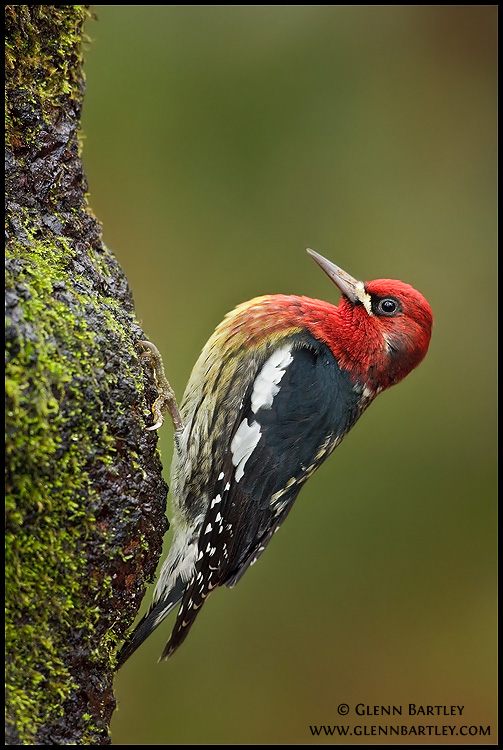 Red-Breasted Sapsucker (Sphyrapicus ruber) perched on a branch in Victoria, BC, Canada.
Red-Breasted Sapsucker (Sphyrapicus ruber) perched on a branch in Victoria, BC, Canada.
Even if all of the other elements are in place a successful bird photograph can not be created if the bird is looking away from the camera. Eye contact draws the viewer in to the image and is a must. Any number of poses can be pleasing. Some species, like nuthatches, even have characteristic poses that they often present. In general, the most desirable poses are those that have good eye contact and where the bird is turning its head slightly towards the camera.
There is no recipe that can be followed when it comes to creating beautiful images of birds. In fact, the most sensational images are often those that surprise us or that show us something we have never seen before. Nevertheless, these seven elements can be used as a guide to help us create consistently stunning images of birds in their natural environment.
Interested in photographing birds? You might also like:
Photographing Birds in Flight
How to Photograph Hummingbirds
How to Photograph Songbirds
How to Attract Birds for Photography
Photographing Birds: Capturing Spoonbills and Pelicans
Tips for Photographing Flying Birds
Photographing Birds: Tips and Techniques
Native Bird Photography Tips in Natural Environments

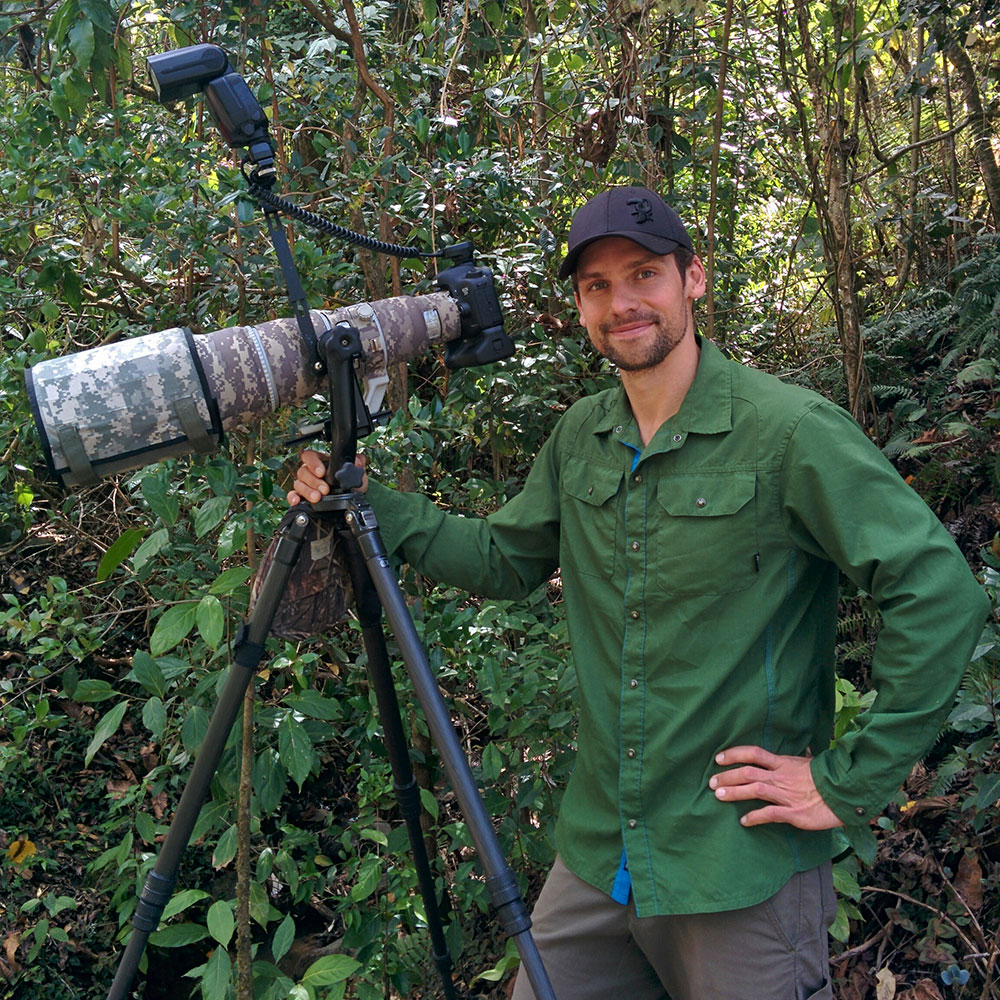 Glenn Bartley is a world-renowned professional nature photographer with a particular interest in photographing exotic birds. Along with being an OPG contributor, he leads photography workshops all around the world. Learn more about Glenn here.
Glenn Bartley is a world-renowned professional nature photographer with a particular interest in photographing exotic birds. Along with being an OPG contributor, he leads photography workshops all around the world. Learn more about Glenn here.
Have something to add to the story? Leave a comment or email editor@outdoorphotographyguide.com.
Very nice, concise and to the point, with exceptional photographs. Thank you.
No mention the type of lens you need to get those kinds of bird shots . Telephoto
Well written advice from your abundance of experience. Beautiful photography of some of God's loveliest creatures. Thank you!
Great website with realy good tips for bird photography!
Great article... Beautiful colorful crisp and clean photography... that lens!
Very nice images But what was the settings? Before I joined they said in a message that all therelevant information is available in the group or site, and I do not see anything yet!
These elements are important/ obvious. What about more specifics such as camera settings to achieve great shots
Beautiful, but specific camera settings of photos would help to make the connection on the results.
Beautiful, would love to know what settings were used so I may practise my skills with my camera .
Thank you for a very interesting article. Always follow anything related to bird photography